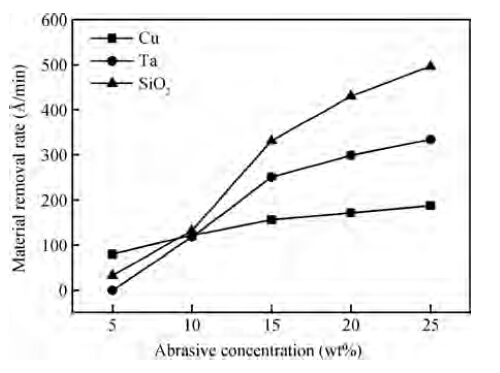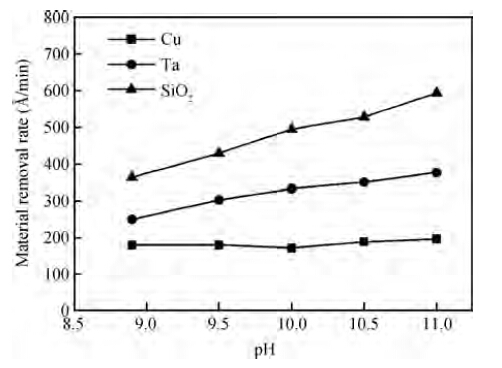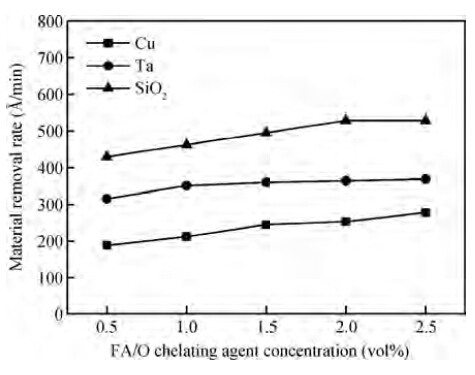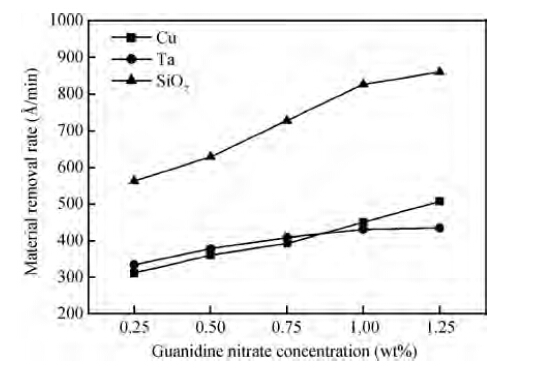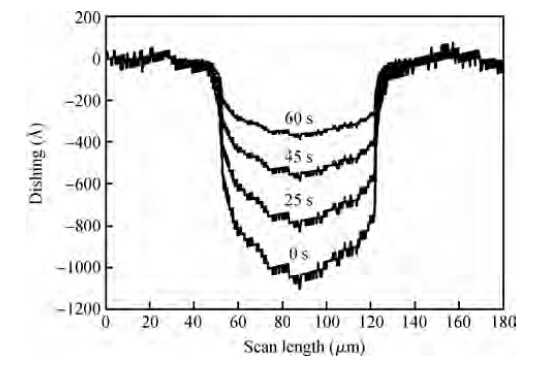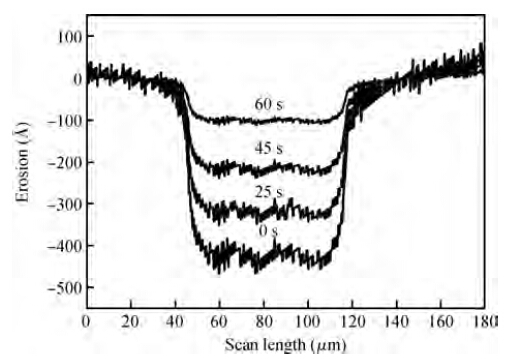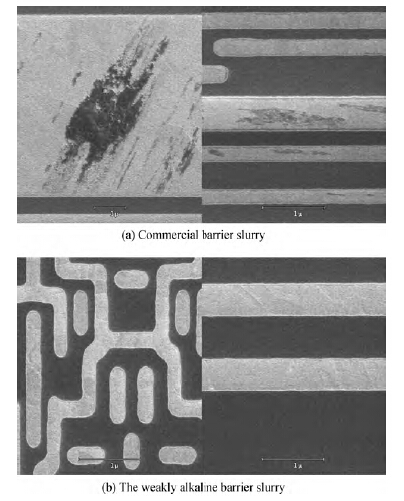| Citation: |
Xiaodong Luan, Yuling Liu, Xinhuan Niu, Juan Wang. Mechanism of the development of a weakly alkaline barrier slurry without BTA and oxidizer[J]. Journal of Semiconductors, 2015, 36(7): 076001. doi: 10.1088/1674-4926/36/7/076001
****
X D Luan, Y L Liu, X H Niu, J Wang. Mechanism of the development of a weakly alkaline barrier slurry without BTA and oxidizer[J]. J. Semicond., 2015, 36(7): 076001. doi: 10.1088/1674-4926/36/7/076001.
|
Mechanism of the development of a weakly alkaline barrier slurry without BTA and oxidizer
DOI: 10.1088/1674-4926/36/7/076001
More Information
-
Abstract
Controllable removal rate selectivity with various films (Cu, Ta, SiO2) is a challenging job in barrier CMP. H2O2 as an oxidizer and benzotriazole (BTA) as an inhibitor is considered to be an effective method in barrier CMP. Slurries that contain hydrogen peroxide have a very short shelf life because H2O2 is unstable and easily decomposed. BTA can cause post-CMP challenges, such as organic residue, toxicity and particle adhesion. We have been engaged in studying a weakly alkaline barrier slurry without oxidizer and benzotriazole. Based on these works, the objective of this paper is to discuss the mechanism of the development of the barrier slurry without oxidizer and benzotriazole by studying the effects of the different components (containing colloidal silica, FA/O complexing agent, pH of polishing solution and guanidine nitrate) on removal rate selectivity. The possible related polishing mechanism has also been proposed.-
Keywords:
- CMP,
- barrier slurry,
- selectivity,
- cleaning
-
References
[1] [2] [3] [4] [5] [6] [7] [8] [9] [10] [11] [12] [13] [14] [15] [16] [17] [18] [19] [20] [21] [22] -
Proportional views





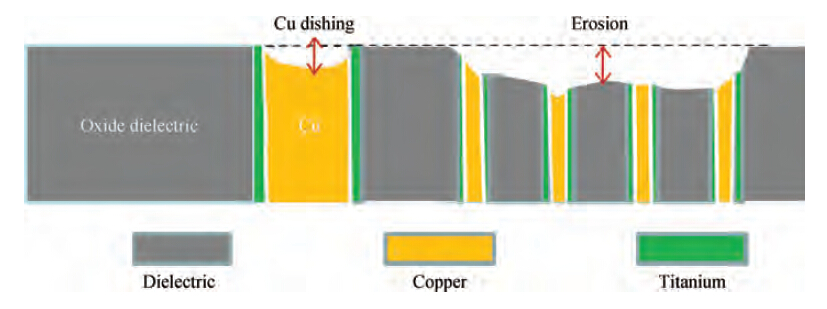
 DownLoad:
DownLoad:
